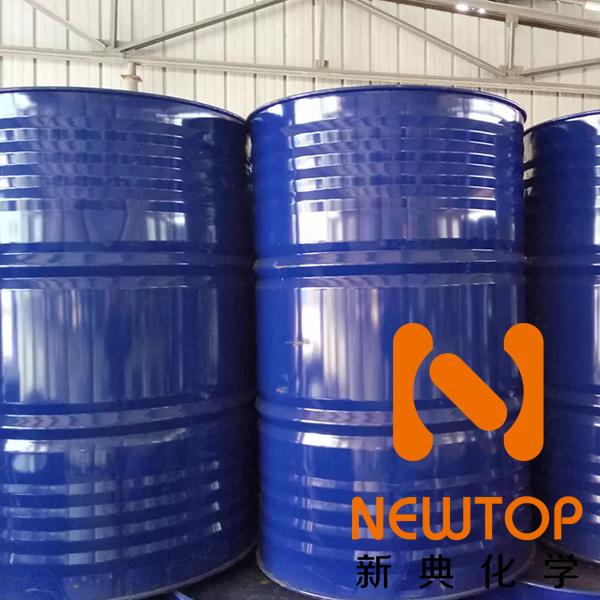-
5 Записей
-
1 Фото
-
0 Видео
-
Не определен
-
Читают 0 человек
Недавние обновления
-
Understanding Foaming Catalysts: Functionality, Types, and ApplicationsFoaming catalysts, also known as blowing agents, are chemical compounds that play a crucial role in the production of various materials, particularly in the plastics and polymer industries. These catalysts facilitate the creation of uniform cells or pores in materials, resulting in a product that is lighter, more insulating, and often more cost-effective. This article aims to delve into the...0 Комментарии 0 Поделились 2Кб Просмотры 0 предпросмотр3
 Войдите, чтобы отмечать, делиться и комментировать!
Войдите, чтобы отмечать, делиться и комментировать! -
The Power of Metal Catalysts: Unveiling their Role in Chemical Reactions and Industrial ApplicationsIntroduction Metal catalysts have been a cornerstone of chemical reactions and industrial processes for centuries. These powerful agents facilitate and accelerate various chemical transformations, making them indispensable in numerous sectors, including pharmaceuticals, agriculture, energy, and environmental protection. This article aims to delve into the fascinating world of metal catalysts,...0 Комментарии 0 Поделились 2Кб Просмотры 0 предпросмотр1

-
Hard Foam Catalysts: A Comprehensive Overview
Introduction
Hard foam catalysts have emerged as a significant development in the field of chemical engineering and industrial applications. These unique materials combine the advantages of traditional catalysts with the benefits of a porous, lightweight structure, enabling efficient and sustainable chemical reactions. This essay aims to provide a comprehensive overview of hard foam catalysts, their preparation, properties, and applications.
Preparation of Hard Foam Catalysts
Hard foam catalysts are typically prepared using a foam-templating method. This process involves the creation of a foam, often from a polymeric material, which is then used as a template for the deposition or synthesis of the catalytic material. The foam is subsequently removed, leaving behind a porous, three-dimensional structure with high surface area and excellent mass transport properties.
The choice of foam material and catalyst precursor, as well as the conditions under which the deposition or synthesis occurs, can significantly influence the properties of the resulting hard foam catalyst. For instance, varying the pore size of the foam template can control the size and distribution of the catalytic material, while the use of different precursors can alter the chemical composition and activity of the catalyst.
Properties of Hard Foam Catalysts
Hard foam catalysts exhibit several advantageous properties that make them attractive for various applications. Their high surface area and porosity facilitate efficient contact between the catalyst and reactants, enhancing the rate and yield of chemical reactions. The three-dimensional structure of the catalyst also allows for excellent mass transport, reducing diffusion limitations and improving overall reaction efficiency.
Moreover, hard foam catalysts are typically lightweight and mechanically robust, making them easy to handle and suitable for use in large-scale industrial processes. They can also be designed to exhibit specific chemical properties, such as selectivity towards certain reactions or resistance to deactivation, by carefully controlling the synthesis conditions and choice of catalytic material.
Applications of Hard Foam Catalysts
Hard foam catalysts find applications in a wide range of industries, including chemical manufacturing, environmental remediation, and energy production. In chemical manufacturing, they can be used to catalyze various reactions, such as oxidation, reduction, and hydrogenation, with improved efficiency and selectivity compared to traditional catalysts.
In environmental remediation, hard foam catalysts can be used to degrade pollutants in air and water. Their high surface area and porosity make them effective at adsorbing pollutants, while their catalytic activity enables the degradation of these pollutants into harmless byproducts.
In the energy sector, hard foam catalysts are being explored for use in fuel cells and other energy conversion devices. Their unique structure and properties make them suitable for facilitating the electrochemical reactions that occur in these devices, potentially improving their efficiency and sustainability.
Conclusion
Hard foam catalysts represent a promising development in the field of catalysis, offering a combination of high surface area, porosity, and mechanical robustness that can enhance the efficiency and sustainability of various chemical processes. As our understanding of these materials continues to grow, it is expected that their use will become increasingly widespread, contributing to advancements in chemical manufacturing, environmental remediation, energy production, and beyond.
Recommended Reading:
N-Acetylmorpholine
N-Ethylmorpholine
Morpholine
High Quality 3164-85-* / K-15 Catalyst / Potassium Isooctanoate
High Quality Bismuth Octoate / 67874-71-* / Bismuth *-Ethylhexanoate
Bismuth *-Ethylhexanoate
Bismuth Octoate
High Quality BDMA / 103-83-* / Benzyldimethylamine / N,N-dimthylbenzylamine
Benzyldimethylamine
*-(*-Aminoethoxy)ethanol
DMAPA
Hard Foam Catalysts: A Comprehensive Overview Introduction Hard foam catalysts have emerged as a significant development in the field of chemical engineering and industrial applications. These unique materials combine the advantages of traditional catalysts with the benefits of a porous, lightweight structure, enabling efficient and sustainable chemical reactions. This essay aims to provide a comprehensive overview of hard foam catalysts, their preparation, properties, and applications. Preparation of Hard Foam Catalysts Hard foam catalysts are typically prepared using a foam-templating method. This process involves the creation of a foam, often from a polymeric material, which is then used as a template for the deposition or synthesis of the catalytic material. The foam is subsequently removed, leaving behind a porous, three-dimensional structure with high surface area and excellent mass transport properties. The choice of foam material and catalyst precursor, as well as the conditions under which the deposition or synthesis occurs, can significantly influence the properties of the resulting hard foam catalyst. For instance, varying the pore size of the foam template can control the size and distribution of the catalytic material, while the use of different precursors can alter the chemical composition and activity of the catalyst. Properties of Hard Foam Catalysts Hard foam catalysts exhibit several advantageous properties that make them attractive for various applications. Their high surface area and porosity facilitate efficient contact between the catalyst and reactants, enhancing the rate and yield of chemical reactions. The three-dimensional structure of the catalyst also allows for excellent mass transport, reducing diffusion limitations and improving overall reaction efficiency. Moreover, hard foam catalysts are typically lightweight and mechanically robust, making them easy to handle and suitable for use in large-scale industrial processes. They can also be designed to exhibit specific chemical properties, such as selectivity towards certain reactions or resistance to deactivation, by carefully controlling the synthesis conditions and choice of catalytic material. Applications of Hard Foam Catalysts Hard foam catalysts find applications in a wide range of industries, including chemical manufacturing, environmental remediation, and energy production. In chemical manufacturing, they can be used to catalyze various reactions, such as oxidation, reduction, and hydrogenation, with improved efficiency and selectivity compared to traditional catalysts. In environmental remediation, hard foam catalysts can be used to degrade pollutants in air and water. Their high surface area and porosity make them effective at adsorbing pollutants, while their catalytic activity enables the degradation of these pollutants into harmless byproducts. In the energy sector, hard foam catalysts are being explored for use in fuel cells and other energy conversion devices. Their unique structure and properties make them suitable for facilitating the electrochemical reactions that occur in these devices, potentially improving their efficiency and sustainability. Conclusion Hard foam catalysts represent a promising development in the field of catalysis, offering a combination of high surface area, porosity, and mechanical robustness that can enhance the efficiency and sustainability of various chemical processes. As our understanding of these materials continues to grow, it is expected that their use will become increasingly widespread, contributing to advancements in chemical manufacturing, environmental remediation, energy production, and beyond. Recommended Reading: N-Acetylmorpholine N-Ethylmorpholine Morpholine High Quality 3164-85-0 / K-15 Catalyst / Potassium Isooctanoate High Quality Bismuth Octoate / 67874-71-9 / Bismuth 2-Ethylhexanoate Bismuth 2-Ethylhexanoate Bismuth Octoate High Quality BDMA / 103-83-3 / Benzyldimethylamine / N,N-dimthylbenzylamine Benzyldimethylamine 2-(2-Aminoethoxy)ethanol DMAPA1 Комментарии 0 Поделились 1Кб Просмотры 0 предпросмотр1
-
The Advantages of Catalysts: A Closer Look at Their Impact and ImportanceIntroduction Catalysts are substances that increase the rate of chemical reactions without being consumed in the process, making them essential components in various industries, biological systems, and environmental processes. This article aims to explore the numerous advantages of catalysts, their applications, and their significance in our everyday lives. Accelerating Chemical...0 Комментарии 0 Поделились 2Кб Просмотры 0 предпросмотр2

-
N,N-Diisopropylethylamine CAS7087-68-*
N,N-Diisopropylethylamine
N-Ethyldiisopropylamine,
*-METHYL-*-BUTINE-*-OL;
BIOTECHGRADESOLVENT,99.*%;
DIPEA,
Ethyldiisopropylamine,
Hünig’s base
CAS Number:7087-68-*
EC Number:230-392-*
MDL number:MFCD00008868
Appearance Colorless to Light yellow clear liquid
Purity(GC) min. 99.* %
Quality Level 200
Assay ≥99%
form liquid
refractive index n20/D *.414 (lit.)
Melting Point -45 °C
Boiling Point 127 °C
density *.742 g/mL at 25 °C (lit.)
Specific Gravity *.92
Molecular Formula / Molecular Weight C8H19N = 129.25
Flash point 12 °C
Refractive Index *.41
Solubility in water Insoluble
Solubility (soluble in) Alcohol
Condition to Avoid Air Sensitive
CAS 7087-68-*
MDL Number MFCD00008868
Explosion limit *.* - *.* %(V)
pH value 12.* (H₂O, 20 °C) (as an emulsion)
Viscosity kinematic *.88 mm2/s (20 °C)
Vapor pressure 14 hPa (20 °C)
HS Code 2921 19 99
General description
N,N-Diisopropylethylamine, also known as Hünig′s base, is a sterically hindered amine. It is a non-nucleophilic base commonly employed for substitution reactions.It acts as an activator for chiral iridium N, P ligand complexes, which can be utilized in the hydrogenation of α, β-unsaturated nitriles. The influence of varying concentration of N,N-diisopropylethylamine on the synthesis of olvanil in the presence of lipase catalyst has been investigated.
Application
N,N-Diisopropylethylamine may be used in the synthesis of mannosylated ovalbumin peptides.
TBDPS protection of Alcohols using tert-Butylchlorodiphenylsilane.
BOM protection of Alcohols using Benzyloxymethyl Chloride.
Storage and transportation:
Should be sealed and stored in a dry, cool and ventilated warehouse
Package:
200KG/drum Storage: It is recommended to store in dry and cool area with proper ventilation. Please fasten the lid as soon as possible after original packing to prevent the mixing of other substances such as moisture from affecting the product performance. Do not inhale dust and avoid skin and mucous membrane contact. Smoking, eating and drinking are prohibited in the workplace. After work, shower and change clothes. Store contaminated clothes separately and wash them before use. Maintain good hygiene habits.
https://www.newtopchem.com/archives/43095
Email us: info@newtopchem.com
N,N-Diisopropylethylamine CAS7087-68-5 N,N-Diisopropylethylamine N-Ethyldiisopropylamine, 3-METHYL-1-BUTINE-3-OL; BIOTECHGRADESOLVENT,99.5%; DIPEA, Ethyldiisopropylamine, Hünig’s base CAS Number:7087-68-5 EC Number:230-392-0 MDL number:MFCD00008868 Appearance Colorless to Light yellow clear liquid Purity(GC) min. 99.0 % Quality Level 200 Assay ≥99% form liquid refractive index n20/D 1.414 (lit.) Melting Point -45 °C Boiling Point 127 °C density 0.742 g/mL at 25 °C (lit.) Specific Gravity 0.92 Molecular Formula / Molecular Weight C8H19N = 129.25 Flash point 12 °C Refractive Index 1.41 Solubility in water Insoluble Solubility (soluble in) Alcohol Condition to Avoid Air Sensitive CAS 7087-68-5 MDL Number MFCD00008868 Explosion limit 0.7 - 6.3 %(V) pH value 12.3 (H₂O, 20 °C) (as an emulsion) Viscosity kinematic 0.88 mm2/s (20 °C) Vapor pressure 14 hPa (20 °C) HS Code 2921 19 99 General description N,N-Diisopropylethylamine, also known as Hünig′s base, is a sterically hindered amine. It is a non-nucleophilic base commonly employed for substitution reactions.It acts as an activator for chiral iridium N, P ligand complexes, which can be utilized in the hydrogenation of α, β-unsaturated nitriles. The influence of varying concentration of N,N-diisopropylethylamine on the synthesis of olvanil in the presence of lipase catalyst has been investigated. Application N,N-Diisopropylethylamine may be used in the synthesis of mannosylated ovalbumin peptides. TBDPS protection of Alcohols using tert-Butylchlorodiphenylsilane. BOM protection of Alcohols using Benzyloxymethyl Chloride. Storage and transportation: Should be sealed and stored in a dry, cool and ventilated warehouse Package: 200KG/drum Storage: It is recommended to store in dry and cool area with proper ventilation. Please fasten the lid as soon as possible after original packing to prevent the mixing of other substances such as moisture from affecting the product performance. Do not inhale dust and avoid skin and mucous membrane contact. Smoking, eating and drinking are prohibited in the workplace. After work, shower and change clothes. Store contaminated clothes separately and wash them before use. Maintain good hygiene habits. https://www.newtopchem.com/archives/43095 Email us: info@newtopchem.com0 Комментарии 0 Поделились 931 Просмотры 0 предпросмотр4
Больше





